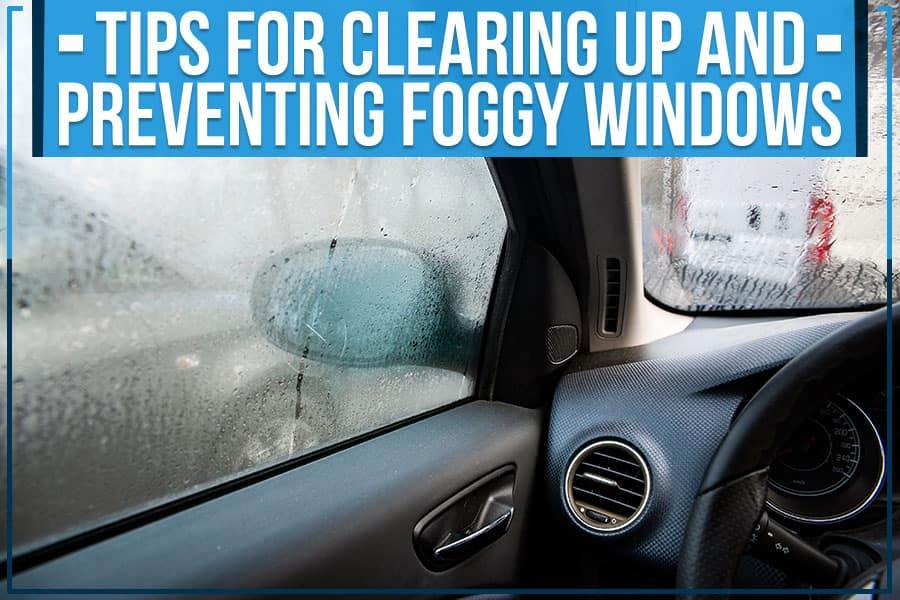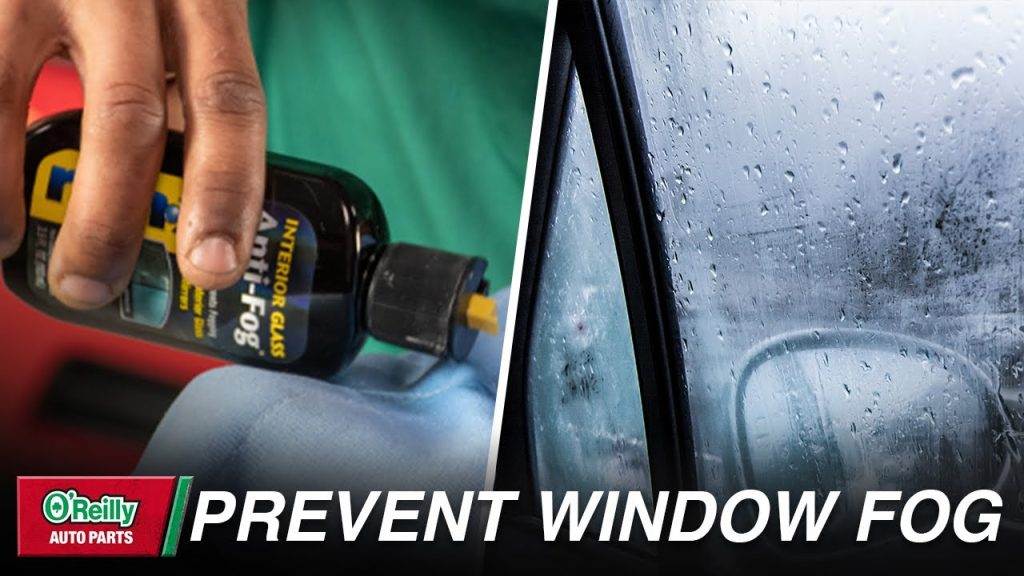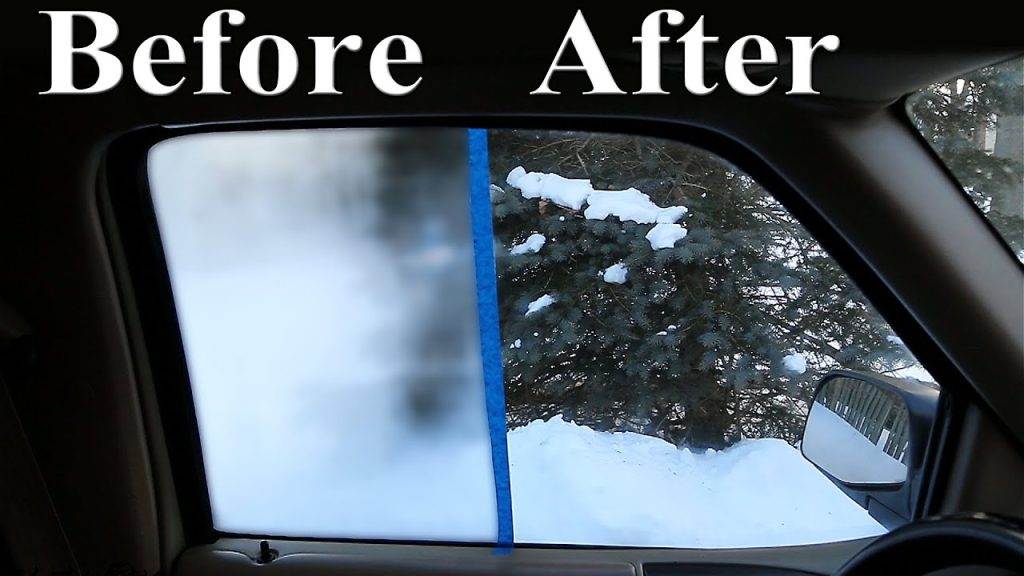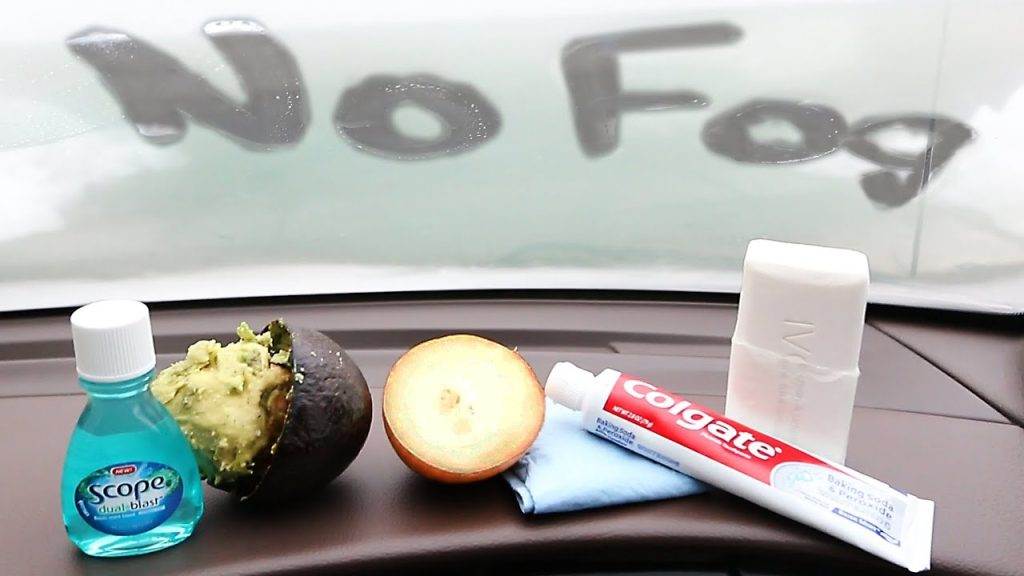We’ve all experienced the frustration of fogged-up windows, whether it’s on our car, at home, or even at work. It can hinder visibility, create a distraction, and make it difficult to see clearly. But fear not, there are simple and effective solutions to prevent this pesky problem. In this article, we will explore some tried and tested techniques to keep your windows clear and fog-free, allowing you to navigate the world with clarity and ease. So, let’s uncover the secrets to banishing fogged-up windows once and for all.

This image is property of di-uploads-pod27.dealerinspire.com.
Understanding foggy windows
Foggy windows can be a frustrating and inconvenient problem to deal with. Not only do they obstruct our view, but they can also lead to moisture damage and mold growth if left unchecked. But before we explore various methods to prevent and alleviate window fogging, let’s first understand the causes and effects of this phenomenon.
Causes of window fogging
Windows fog up when warm, moist air comes into contact with a cold surface. This occurs due to the difference in temperature between the air and the window. The moisture in the warmer air condenses into droplets on the cooler surface of the window, forming fog. Several factors contribute to this condensation process:
-
High humidity: When there is a significant amount of moisture in the air, the chances of foggy windows increase. This is particularly common in bathrooms, kitchens, and areas with poor ventilation.
-
Temperature differences: If the indoor temperature is significantly higher than the outdoor temperature, condensation is more likely to occur. This is often the case during colder seasons or when air conditioning is in use.
-
Lack of air circulation: Poor ventilation can exacerbate window fogging issues. Without proper air circulation, moisture cannot escape, making it more prone to condensing on surfaces.
Effects of window fogging
While foggy windows may seem like a minor inconvenience, they can lead to significant problems if neglected. Here are a few effects of window fogging:
-
Reduced visibility: Foggy windows can impair our ability to see clearly, whether we are driving a car, cooking in the kitchen, or simply trying to enjoy the view from our home.
-
Damage to window frames and seals: Excessive moisture can cause window frames and seals to deteriorate over time. This can lead to drafts, leaks, and even potential structural damage.
-
Mold and mildew growth: When condensation continuously forms on windows, it creates a damp environment that is conducive to mold and mildew growth. This not only poses health risks but can also damage the surrounding walls and surfaces.
Understanding the causes and effects of window fogging is crucial in finding effective solutions. Let’s explore some preventive measures that can help address this issue.
Preventing window fogging
Prevention is key when it comes to combating window fogging. By implementing a few simple strategies, we can significantly reduce the occurrence of foggy windows and maintain clear visibility.
Proper ventilation
One of the most effective ways to prevent window fogging is by ensuring proper ventilation throughout our living spaces. Here are a few tips to improve airflow:
-
Open windows: Whenever weather conditions permit, opening windows can facilitate the exchange of indoor and outdoor air, reducing humidity levels inside.
-
Use exhaust fans: In areas prone to high humidity, such as bathrooms and kitchens, utilizing exhaust fans can help remove excess moisture from the air. Make sure to run the fan for an adequate amount of time to ensure efficient ventilation.
-
Install a whole-house ventilation system: For homes with persistent moisture issues, installing a whole-house ventilation system can provide consistent air exchange, reducing the chances of window fogging.
Using window insulation film
Window insulation film is a thin layer of plastic film that adheres to the interior surface of windows. It acts as a barrier, preventing warm indoor air from coming into direct contact with the cold window surface. This helps minimize condensation and, subsequently, foggy windows. Window insulation film is affordable, easy to install, and can provide insulation benefits, making it a practical solution for reducing window fogging.
Installing double-pane windows
Another effective long-term solution to combat window fogging is to install double-pane windows. Double-pane windows consist of two glass panes separated by a layer of insulating gas, such as argon or krypton. These windows provide better insulation, reducing the temperature difference between the interior and exterior surfaces. As a result, the occurrence of foggy windows is significantly reduced.
Adding weatherstripping
Weatherstripping involves sealing gaps around windows and doors to prevent drafts and minimize air leakage. By ensuring a tighter seal, cold air is less likely to penetrate the interior, reducing the potential for window fogging. Weatherstripping materials can include adhesive-backed foam tape, V-strip, or door sweeps, and installation is relatively simple, making it an accessible DIY solution.
Using a dehumidifier
If indoor humidity levels remain consistently high despite other preventive measures, using a dehumidifier can be beneficial. Dehumidifiers extract moisture from the air, reducing overall humidity levels within a space. By managing humidity, the likelihood of window fogging decreases. Place the dehumidifier in areas prone to moisture buildup, such as basements or laundry rooms, and empty the collected water regularly.
Now that we have explored several preventive measures, let’s turn our attention to natural remedies that can help address existing foggy windows.
Natural remedies for foggy windows
Sometimes, we may find ourselves dealing with foggy windows without access to commercial products or homemade solutions. In these instances, there are a few natural remedies that can provide temporary relief.
Using a vinegar solution
Vinegar, known for its versatile cleaning properties, can also be used to combat window fogging. Mix equal parts of white vinegar and water in a spray bottle. Spray the solution onto the surface of the foggy window and wipe it clean with a lint-free cloth or paper towel. Vinegar helps to dissolve any residue or film that may contribute to window fogging, leaving the glass clear and more resistant to fog.
Applying a potato slice
While it may sound unconventional, rubbing a raw potato slice on fogged-up windows can help reduce condensation. Cut a potato into thick slices and rub the raw side across the entire surface of the window. The natural sugars and starches present in potatoes create a thin protective layer on the glass, minimizing the fogging effect. Wipe away any excess moisture and enjoy clearer windows.
Rubbing with shaving cream
Shaving cream, typically used for grooming purposes, can also help prevent temporary fogging. Apply a small amount of shaving cream to a clean, lint-free cloth and rub it onto the window in a circular motion. Allow it to dry for a few minutes, then buff the glass until clear. The residual layer left behind by the shaving cream acts as a barrier against condensation, keeping the window fog-free for a period of time.
Using a chalkboard eraser
Chalkboard erasers, often used to clean and maintain chalkboards, can also be effective at reducing window fogging. Simply rub a dry chalkboard eraser across the entire fogged-up surface. The fine particles from the eraser help to absorb moisture, making the glass clearer and less prone to fogging. This method is quick, easy, and can be done without any additional products.
While these natural remedies may offer temporary relief, it is important to note that their effectiveness may vary depending on the severity of the fogging and the specific conditions. For a more enduring solution, commercial anti-fog coatings are worth considering.
Commercial anti-fog coatings
Commercial anti-fog coatings are specially designed products that offer long-lasting protection against window fogging. They provide a more reliable and durable solution compared to natural remedies or homemade alternatives. Let’s explore the overview, types, application methods, and effectiveness of these coatings.
Overview of anti-fog coatings
Anti-fog coatings are thin, transparent films that are applied to the surface of windows to prevent condensation. They work by reducing the surface tension of water droplets, causing the moisture to disperse evenly as a thin film rather than forming foggy patches. These coatings are commonly used in various industries, including automotive, eyewear, and medical.
Types of anti-fog coatings
There are several types of anti-fog coatings available, each with its own unique properties and applications. Some common types include:
-
Hydrophilic coatings: These coatings attract and absorb moisture, spreading it evenly on the surface. They reduce the formation of droplets, preventing fogging.
-
Hydrophobic coatings: Hydrophobic coatings repel water, minimizing its ability to form droplets. This prevents fogging by encouraging the moisture to disperse as a thin, transparent film.
-
Nanocoatings: Nanocoatings utilize nanotechnology to create a thin, invisible layer that modifies the surface properties of the glass. These coatings can be either hydrophilic or hydrophobic, depending on the desired effect.
Application methods
Anti-fog coatings can be applied using various methods, including:
-
Spray-on application: A liquid solution containing the anti-fog coating is sprayed onto the surface of the glass. The solution is then buffed and allowed to dry, leaving behind a protective film.
-
Pre-applied films: Some anti-fog coatings come in the form of pre-cut films that can be directly applied to the window surface. These films are self-adhesive and provide a quick and convenient solution.
-
Professional application: In certain cases, it may be necessary to hire a professional to apply the anti-fog coating. This ensures proper installation and adherence to manufacturer guidelines.
Effectiveness and durability
Commercial anti-fog coatings are generally highly effective and provide long-lasting protection against window fogging. However, their effectiveness and durability may vary depending on factors such as the quality of the coating, its application method, and specific environmental conditions. It is advisable to follow the manufacturer’s instructions and consider any limitations or maintenance requirements associated with the chosen coating.
While commercial anti-fog coatings offer reliable solutions, some individuals prefer to explore do-it-yourself (DIY) options. Let’s take a look at a few DIY anti-fog solutions that can be easily prepared at home.

This image is property of i.ytimg.com.
DIY anti-fog solutions
When commercial anti-fog coatings are not readily accessible or preferred, DIY solutions can offer a cost-effective alternative. These simple mixtures and applications can provide temporary relief from window fogging.
Soap and water solution
A basic soap and water solution can effectively reduce fog on windows. Mix a small amount of dish soap or mild liquid soap with warm water in a spray bottle. Spray the solution sparingly on the window surface and wipe it clean with a lint-free cloth or paper towel. Soap acts as a surfactant, reducing surface tension and ensuring that water spreads out evenly, minimizing foggy patches.
Baby shampoo mixture
Baby shampoo, known for its gentle formulation, can also serve as a DIY anti-fog solution. Dilute a few drops of baby shampoo in a spray bottle filled with water. Shake the bottle to mix the solution thoroughly. Spray a fine mist of the diluted baby shampoo onto the window surface and wipe it clean with a lint-free cloth. The shampoo helps to create a thin protective barrier on the glass, reducing the likelihood of fogging.
Toothpaste application
Toothpaste, commonly used for oral hygiene, can also be used to temporarily prevent window fogging. Apply a small amount of non-gel toothpaste directly to the fogged-up window. Use a clean, lint-free cloth to spread the toothpaste evenly across the surface. Allow it to dry for a few minutes, then buff the glass until clear. The toothpaste leaves behind a residue that acts as a barrier against condensation.
Homemade cornstarch spray
Cornstarch, a common kitchen ingredient, can be used to create a simple anti-fog spray. Mix one tablespoon of cornstarch with one cup of water in a spray bottle. Shake the bottle well to ensure the cornstarch is fully dissolved. Spray a fine mist of the solution onto the window surface and wipe it clean with a lint-free cloth. The cornstarch helps to absorb excess moisture, reducing the likelihood of foggy windows.
While these DIY solutions provide temporary relief, it’s essential to note that their effectiveness may vary depending on the severity of the fogging and the specific conditions. Now, let’s explore how to prevent condensation inside a car, particularly during colder months.
Preventing condensation inside the car
Condensation inside a car can be a common occurrence during certain weather conditions. Fortunately, there are measures we can take to minimize foggy windows and ensure a safe driving experience.
Cracking the windows
When the car is parked or not in use, cracking the windows slightly allows fresh air to circulate. This helps to equalize the temperature and humidity inside the vehicle, reducing the chances of fogging. However, ensure that the windows are not opened widely enough for rain or snow to enter.
Turning on the air conditioner
Using the car’s air conditioner helps to dehumidify the interior air. While it may seem counterintuitive to use cooling when the weather is cold, the air conditioner works by removing moisture from the air, ultimately reducing the likelihood of window fogging. Adjust the temperature and fan speed to maintain a comfortable environment inside the car.
Using a car defogger
Many vehicles are equipped with a defogger function, which directs warm air onto the windshield and side windows to clear moisture and prevent fogging. Activate the defogger feature when necessary to improve visibility and drive safely. Additionally, ensure that the vehicle’s ventilation system is set to the fresh air intake rather than recirculating the interior air.
Avoiding wet items inside the car
Wet items, such as wet clothing or umbrellas, can introduce excess moisture into the car’s interior, contributing to window fogging. Whenever possible, ensure that wet items are dried or placed in waterproof containers before being brought into the car. This simple measure can help maintain a drier interior environment and reduce foggy windows.
By implementing these preventive measures, we can minimize condensation and ensure clearer windows during our car journeys. Now, let’s delve into tips specifically targeted at reducing window fogging in the bathroom.

This image is property of i.ytimg.com.
Tips for reducing window fogging in the bathroom
Bathrooms are notorious for experiencing high humidity levels, leading to frequent window fogging. To keep our bathroom windows clear and prevent moisture-related issues, consider the following tips:
Using exhaust fans
Utilize the exhaust fan in your bathroom to remove excess moisture from the air. Turn it on before taking a shower or bathing and leave it running for a sufficient amount of time after you have finished. This will help to ventilate the space, reducing humidity levels and minimizing window fogging.
Wiping down surfaces
After showering or bathing, take a few moments to wipe down the wet surfaces, such as shower walls, tiles, and bathtub, with a squeegee or a towel. This simple step helps to remove excess moisture that may contribute to window fogging. Additionally, make sure to dry any standing water on the bathroom floor to minimize humidity levels.
Keeping bathroom door open
When using the bathroom, leave the door open to encourage air circulation throughout your home. This allows moisture to dissipate into other areas instead of accumulating solely in the bathroom. Improved airflow can help maintain lower humidity levels, reducing the likelihood of window fogging.
Implementing these tips can create a more pleasant and comfortable environment in your bathroom, minimizing the occurrence of window fogging. Now, let’s focus on preventing foggy windows in cold weather.
Preventing foggy windows in cold weather
Cold weather can exacerbate window fogging issues, making it challenging to maintain clear visibility. To combat this problem during colder months, consider the following preventive measures:
Using defrost mode in the car
When foggy windows are encountered in a car during cold weather, engage the defrost mode. This feature directs warm air onto the windshield and side windows, helping to evaporate condensation and prevent fogging. Adjust the temperature and fan speed to achieve the optimal balance between defogging and comfort.
Avoiding excessive moisture inside
During cold weather, our activities indoors can contribute to higher humidity levels and subsequent window fogging. To minimize this:
-
Cover pots and pans while cooking to reduce the amount of steam released into the air.
-
Ventilate the kitchen and bathroom by using exhaust fans or opening windows. This allows excess moisture to escape, reducing the overall humidity levels inside the home.
-
Limit the use of humidifiers, particularly in rooms adjacent to windows. If necessary, adjust the humidity settings to a lower level to prevent excessive moisture buildup.
Using a portable moisture absorber
To tackle persistent window fogging in colder weather, consider using a portable moisture absorber. These devices contain moisture-absorbing materials, such as silica gel or activated carbon, which help reduce indoor humidity levels. Place them near windows or in areas prone to condensation, and remember to replace or recharge the absorbent material as instructed by the manufacturer.
By implementing these preventive measures, you can minimize window fogging and maintain clear visibility even during cold weather conditions. Lastly, let’s explore tips for avoiding foggy windows when cooking.

This image is property of i.ytimg.com.
Avoiding foggy windows during cooking
The steam and heat generated during cooking can lead to foggy windows if not properly addressed. To keep our kitchen windows clear and enhance cooking experiences, consider the following tips:
Using range hood ventilation
If your kitchen is equipped with a range hood or extractor fan, make sure to use it while cooking. Range hoods effectively remove steam, smoke, and odors from the air, reducing the overall humidity levels in the kitchen. Ensure the range hood is clean and in good working condition to maximize its effectiveness.
Using a lid while cooking
Covering pots and pans with lids while cooking helps to contain the steam within the cookware. This minimizes the amount of moisture released into the air, reducing the chances of window fogging. Additionally, opting for simmering and steaming methods rather than boiling vigorously can help minimize steam production.
Ventilating the kitchen
Opening windows or using exhaust fans in the kitchen can help promote airflow and reduce humidity levels. This allows excess moisture to escape and prevents it from condensing on windows. Remember to keep windows open for a sufficient amount of time after cooking to allow any accumulated moisture to dissipate effectively.
By following these tips, you can significantly reduce window fogging in the kitchen, making cooking a more enjoyable and hassle-free experience.
Maintenance and cleaning tips
Lastly, maintaining clean windows and implementing a few cleaning tips can help prevent and alleviate foggy windows. Consider the following suggestions:
Regular window cleaning
Regularly clean your windows using a suitable window cleaner or a homemade solution of vinegar and water. Remove any dirt, dust, or residue that can contribute to window fogging. Ensure the cleaning solution is non-abrasive and compatible with your window type.
Using newspaper for streak-free results
To achieve streak-free windows, try using crumpled newspaper instead of paper towels or cloths. Newspaper has a slightly abrasive texture, which helps to remove stubborn dirt and leaves the glass surface smooth and clear.
Using anti-static treatment
Applying an anti-static treatment to your windows can help repel dust and reduce smudging. These treatments create a thin layer that reduces the electrostatic charge on the glass surface, making it less attractive to dust particles.
Cleaning window seals
Regularly cleaning and maintaining window seals is essential for preventing moisture infiltration and subsequent window fogging. Use a vacuum cleaner or a soft brush to remove any accumulated dirt or debris. Follow up with a mild detergent solution to clean the seals thoroughly.
By incorporating these maintenance and cleaning tips into your routine, you can help keep your windows clear and prevent the likelihood of window fogging.
In conclusion, foggy windows can be a bothersome issue, but understanding the causes and effects of this phenomenon is crucial in finding effective solutions. By implementing preventive measures such as proper ventilation, using window insulation film, or installing double-pane windows, we can significantly reduce window fogging. Natural remedies like vinegar solutions, potato slices, shaving cream, or chalkboard erasers offer temporary relief, while commercial anti-fog coatings provide long-lasting protection. For those seeking DIY options, soap and water solutions, baby shampoo mixtures, toothpaste applications, or homemade cornstarch sprays can be used. Taking preventive measures to minimize condensation inside cars, in the bathroom, in cold weather, and during cooking can further help reduce foggy windows. Regular maintenance and cleaning, such as window cleaning, using newspaper for streak-free results, using anti-static treatment, and cleaning window seals, are also important for preventing window fogging. By incorporating these various strategies into our daily lives, we can enjoy clearer windows and unobstructed views while avoiding the inconvenience and potential problems caused by foggy windows.

This image is property of content.artofmanliness.com.
